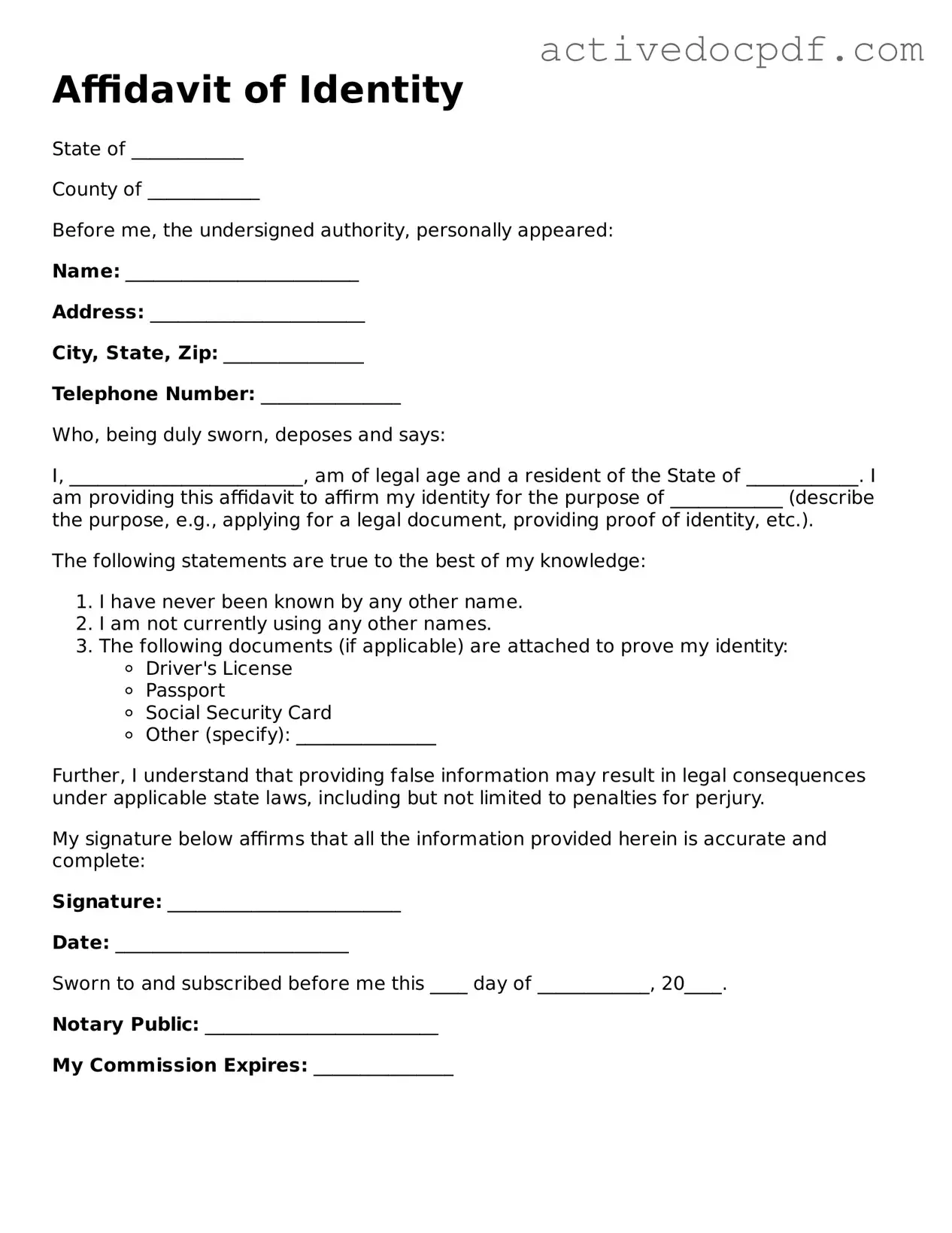What is an Affidavit of Identity?
An Affidavit of Identity is a legal document that individuals use to affirm their identity. It is often required in situations where someone needs to verify their identity, such as when dealing with financial institutions or legal matters. The document serves as a sworn statement that provides proof of who you are.
When do I need to use an Affidavit of Identity?
You may need to use an Affidavit of Identity in various situations, including:
-
Opening a bank account
-
Applying for a loan
-
Obtaining a passport
-
Resolving issues related to identity theft
-
Legal proceedings where identity verification is necessary
How do I complete an Affidavit of Identity?
To complete an Affidavit of Identity, follow these steps:
-
Obtain the form from a reliable source, such as a legal website or office supply store.
-
Fill in your personal information, including your full name, address, and date of birth.
-
Provide any additional details required to verify your identity, such as your Social Security number or driver's license number.
-
Sign the affidavit in the presence of a notary public, who will also sign and seal the document.
Do I need a notary to sign the Affidavit of Identity?
Yes, a notary public must witness your signature on the Affidavit of Identity. This step adds a layer of verification and ensures that the document is legally binding. The notary will confirm your identity and that you are signing the document voluntarily.
The information typically required includes:
-
Your full name
-
Your current address
-
Your date of birth
-
Your Social Security number (if applicable)
-
Any identification numbers relevant to your situation, such as a driver's license number
Can I use a template for the Affidavit of Identity?
Yes, using a template can be helpful. However, ensure that the template complies with your state’s requirements. Each state may have specific rules regarding the content and format of the affidavit. It is wise to review the template carefully and make any necessary adjustments to fit your needs.
Providing false information in an Affidavit of Identity can lead to serious consequences, including legal penalties. This document is a sworn statement, and any inaccuracies can be considered perjury. It is essential to ensure that all information is accurate and truthful before signing.
You can find an Affidavit of Identity form through various sources, including:
-
Legal websites that offer downloadable forms
-
Local government offices
-
Law libraries
-
Office supply stores that sell legal forms
